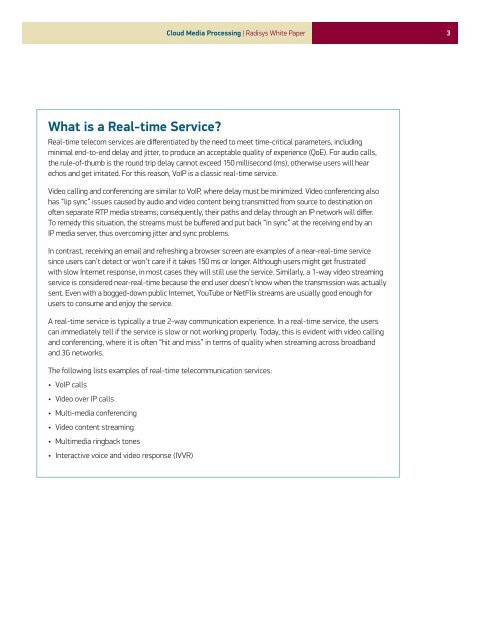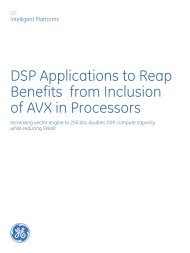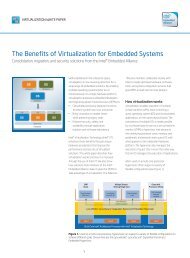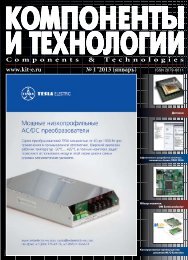Cloud Media Processing - Embedded Community - Intel
Cloud Media Processing - Embedded Community - Intel
Cloud Media Processing - Embedded Community - Intel
You also want an ePaper? Increase the reach of your titles
YUMPU automatically turns print PDFs into web optimized ePapers that Google loves.
What is a Real-time Service?<br />
<strong>Cloud</strong> <strong>Media</strong> <strong>Processing</strong> | Radisys White Paper<br />
Real-time telecom services are differentiated by the need to meet time-critical parameters, including<br />
minimal end-to-end delay and jitter, to produce an acceptable quality of experience (QoE). For audio calls,<br />
the rule-of-thumb is the round trip delay cannot exceed 150 millisecond (ms), otherwise users will hear<br />
echos and get irritated. For this reason, VoIP is a classic real-time service.<br />
Video calling and conferencing are similar to VoIP, where delay must be minimized. Video conferencing also<br />
has “lip sync” issues caused by audio and video content being transmitted from source to destination on<br />
often separate RTP media streams; consequently, their paths and delay through an IP network will differ.<br />
To remedy this situation, the streams must be buffered and put back “in sync” at the receiving end by an<br />
IP media server, thus overcoming jitter and sync problems.<br />
In contrast, receiving an email and refreshing a browser screen are examples of a near-real-time service<br />
since users can’t detect or won’t care if it takes 150 ms or longer. Although users might get frustrated<br />
with slow Internet response, in most cases they will still use the service. Similarly, a 1-way video streaming<br />
service is considered near-real-time because the end user doesn’t know when the transmission was actually<br />
sent. Even with a bogged-down public Internet, YouTube or NetFlix streams are usually good enough for<br />
users to consume and enjoy the service.<br />
A real-time service is typically a true 2-way communication experience. In a real-time service, the users<br />
can immediately tell if the service is slow or not working properly. Today, this is evident with video calling<br />
and conferencing, where it is often “hit and miss” in terms of quality when streaming across broadband<br />
and 3G networks.<br />
The following lists examples of real-time telecommunication services:<br />
• VoIP calls<br />
• Video over IP calls<br />
• Multi-media conferencing<br />
• Video content streaming<br />
• Multimedia ringback tones<br />
• Interactive voice and video response (IVVR)<br />
3













